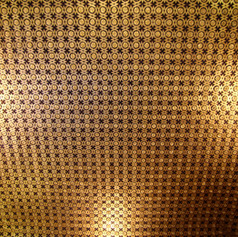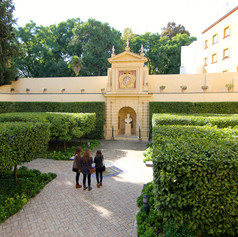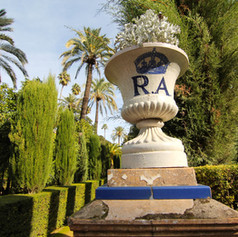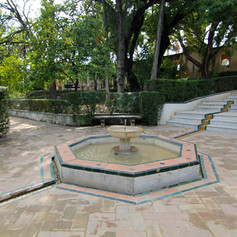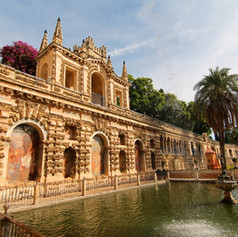If you’re looking for the top things to do and see in Seville, then the Alcazar Palace and its gardens is definitely a must visit! Located in the centre of the city, very near the Cathedral, this royal palace was built mainly during the 1300s. The historical evolution of Seville in the last millennium is held within its walls and gardens, amalgamating influences starting from the Arabic period, late Middle Ages Mudéjar right through to the Renaissance, Baroque and the XIX century. But before you go and discover the long queues for the ticket office, my recommendation is to buy the tickets online. You avoid the wait and it’s so easy! Our hotel, Corral del Rey bought them for us, but if you would do it yourself click HERE to buy them.

The main entrance to the Alcázar takes its name from the 19th century tile-work inlaid above it, a crowned lion holding a cross in its claws and bearing a Gothic script.






So what is the Alcazar of Seville? Reales Alcázares de Sevilla (this is how the Spanish call it) is a royal palace originally developed by Moorish Muslim kings. The stunning palace is considered to be as one of the most beautiful in Spain and actually the upper levels of the Alcázar are still being used by the royal family as the official Seville residence. Alcazar is also the oldest royal palace still in use in Europe, and in 1987 UNESCO named it as a World Heritage Site. The term ‘Alcázar’ comes from the Hispano-Arabic word ‘Alqáşr’ that means ‘Royal House’ or ‘Room of the Prince’.












I especially enjoyed the beautiful gardens of the palace, filled with fruit trees, horticultural produce and a wide variety of fragrant flowers. The garden-orchards not only supplied food for the palace residents but had the aesthetic function of bringing pleasure. You can find water elements in the various irrigation channels, runnels, jets, ponds and pools. The gardens have actually undergone many changes. In the 16th century during the reign of Philip III the Italian designer Vermondo Resta introduced the Italian Mannerist style. Resta was responsible for the Galeria de Grutesco (Grotto Gallery) transforming the old Muslim wall into a loggia from which to admire the view of the palace gardens.


















The "Baths of Lady María de Padilla" are rainwater tanks beneath the Patio del Crucero. The tanks are named after María de Padilla, who was the mistress of Peter the Cruel.




Opening times
October to March: From Monday to Sunday, 09:30 to 17:00.
April to September: From Monday to Sunday, 09:30 to 19:00.
Closed on the 1st and 6th of January, Good Friday and the 25th of December.
Regular ticket: 9.50 €
SaveSaveSaveSaveSaveSave






















